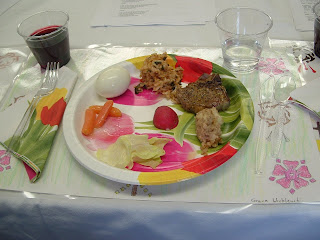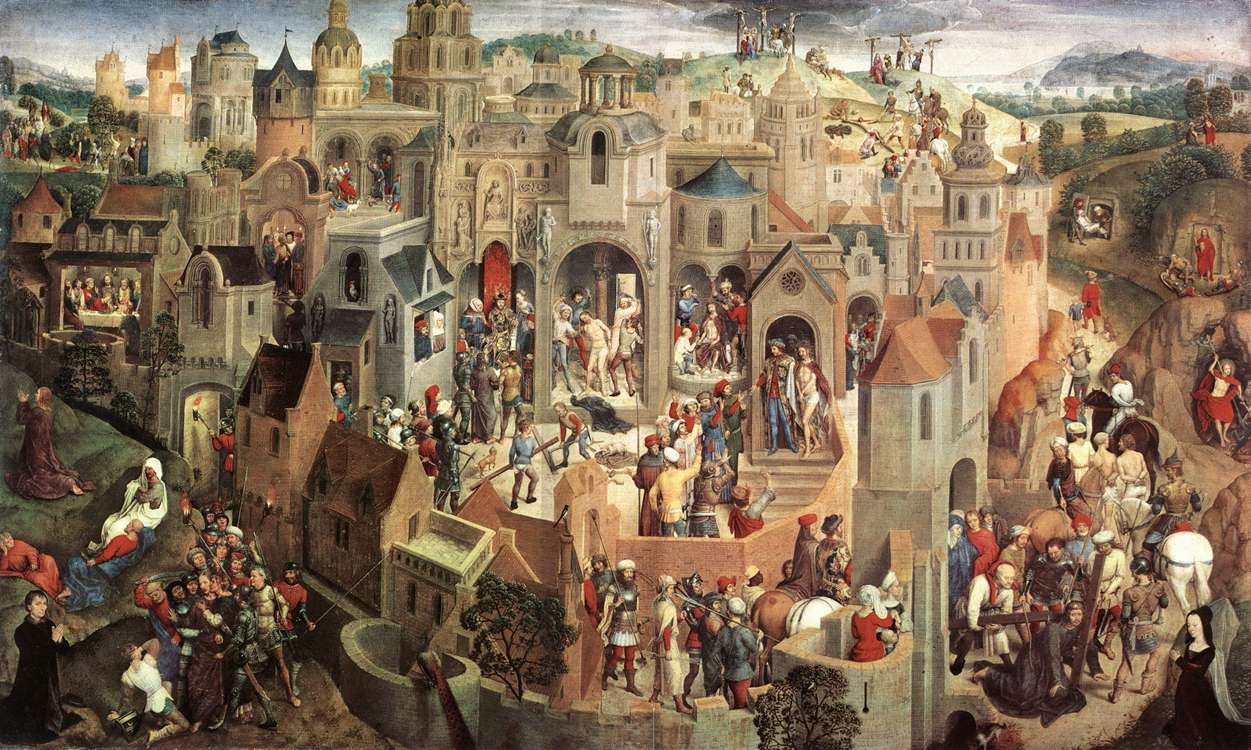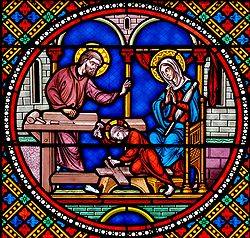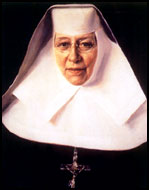 On Tuesday, the 6th grade at Saint Andrew School held a Christian Seder Meal. The Seder meal is the celebration of the Jewish Passover - commemorating when God freed the Jewish People from slavery to the Pharaoh and brought them out of Egypt to begin their 40-year journey through the promised land.
On Tuesday, the 6th grade at Saint Andrew School held a Christian Seder Meal. The Seder meal is the celebration of the Jewish Passover - commemorating when God freed the Jewish People from slavery to the Pharaoh and brought them out of Egypt to begin their 40-year journey through the promised land. The Seder is, of course, filled with symbolic foods and symbols to remind the Jewish People of the events of that first Passover - when the Angel of Death "passed over" the homes that had been marked by the blood of the Paschal lamb, but destroyed all the first-born in every home not marked with the lamb's blood.
For example:
- a radish - symbolizes the bitterness of life as a slave in Egypt
- parsley (we used lettuce) dipped in salt water - symbolizes the tears of the Hebrews - but also causes us to remember the sorrow and suffering of so many, even today
- unleavened bread - because the Hebrews had no time to let their dough rise before leaving Egypt
- haroseth (a mixture of apple, cinnamon and walnuts) - which looks like a brown paste - symbolizes the mortar that the Hebrews had to use in building cities for Pharoah
- lamb - symbolizes the blood placed on each of the Hebrew's door to mark the homes where God's people were - thus saving them from the terrible plague of the death of the first-born
 It was the Seder Meal that Jesus was celebrating with his apostles when He instituted the Holy Eucharist and the Priesthood on that first Holy Thursday "on the night before He died for us." The Seder involves the retelling of the "Haggadah" - the story of the deliverance of the Hebrews from their suffering as slaves in Egypt.
It was the Seder Meal that Jesus was celebrating with his apostles when He instituted the Holy Eucharist and the Priesthood on that first Holy Thursday "on the night before He died for us." The Seder involves the retelling of the "Haggadah" - the story of the deliverance of the Hebrews from their suffering as slaves in Egypt. When Christians celebrate the Seder Meal, we "Christianize" it - and make clear all the references to Christ and His Paschal Sacrifice.
As our Jewish brothers and sisters celebrate the Passover this week, we remember them in our prayers - that God may keep them faithful to the Covenant He established with them.









































